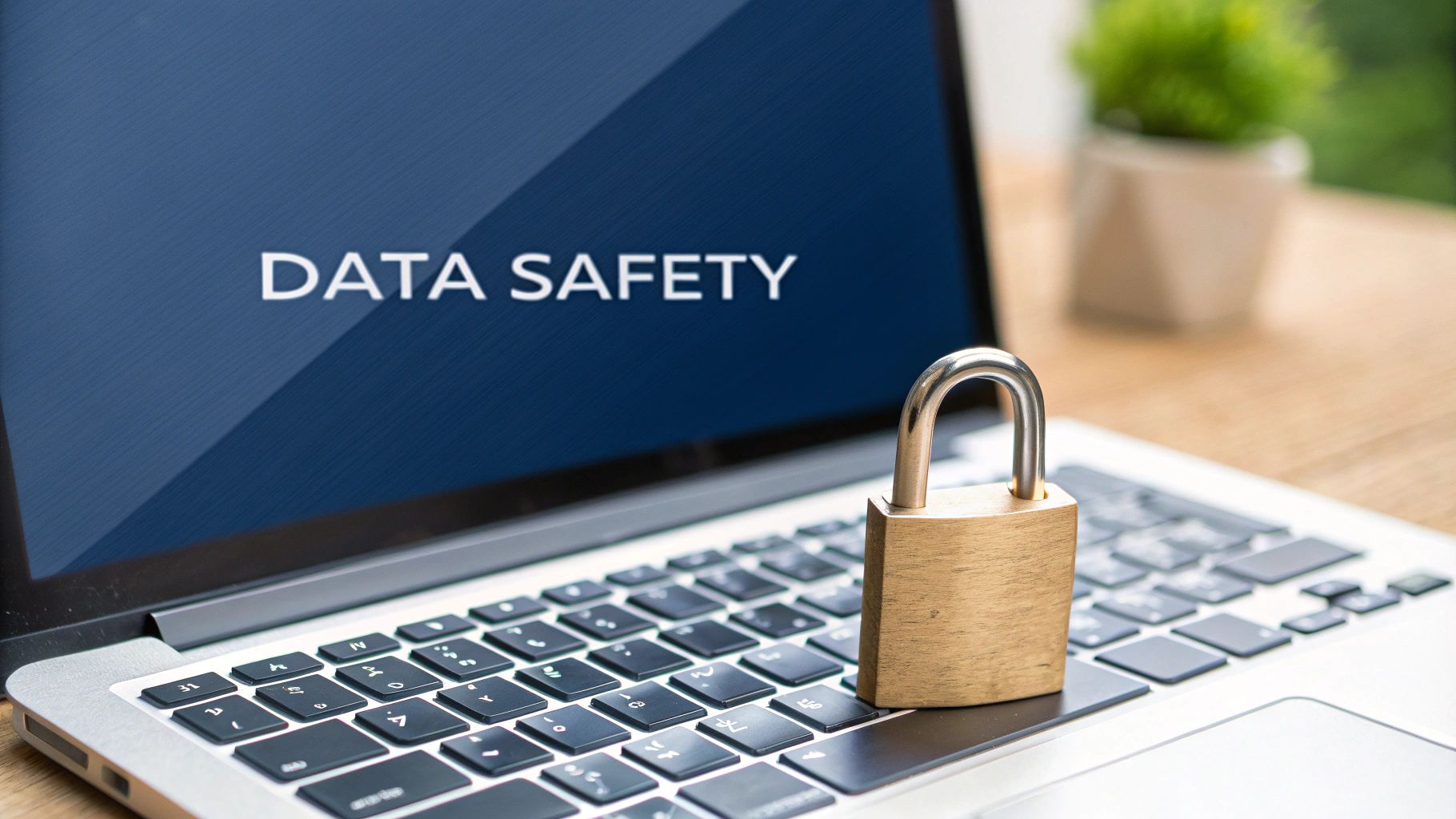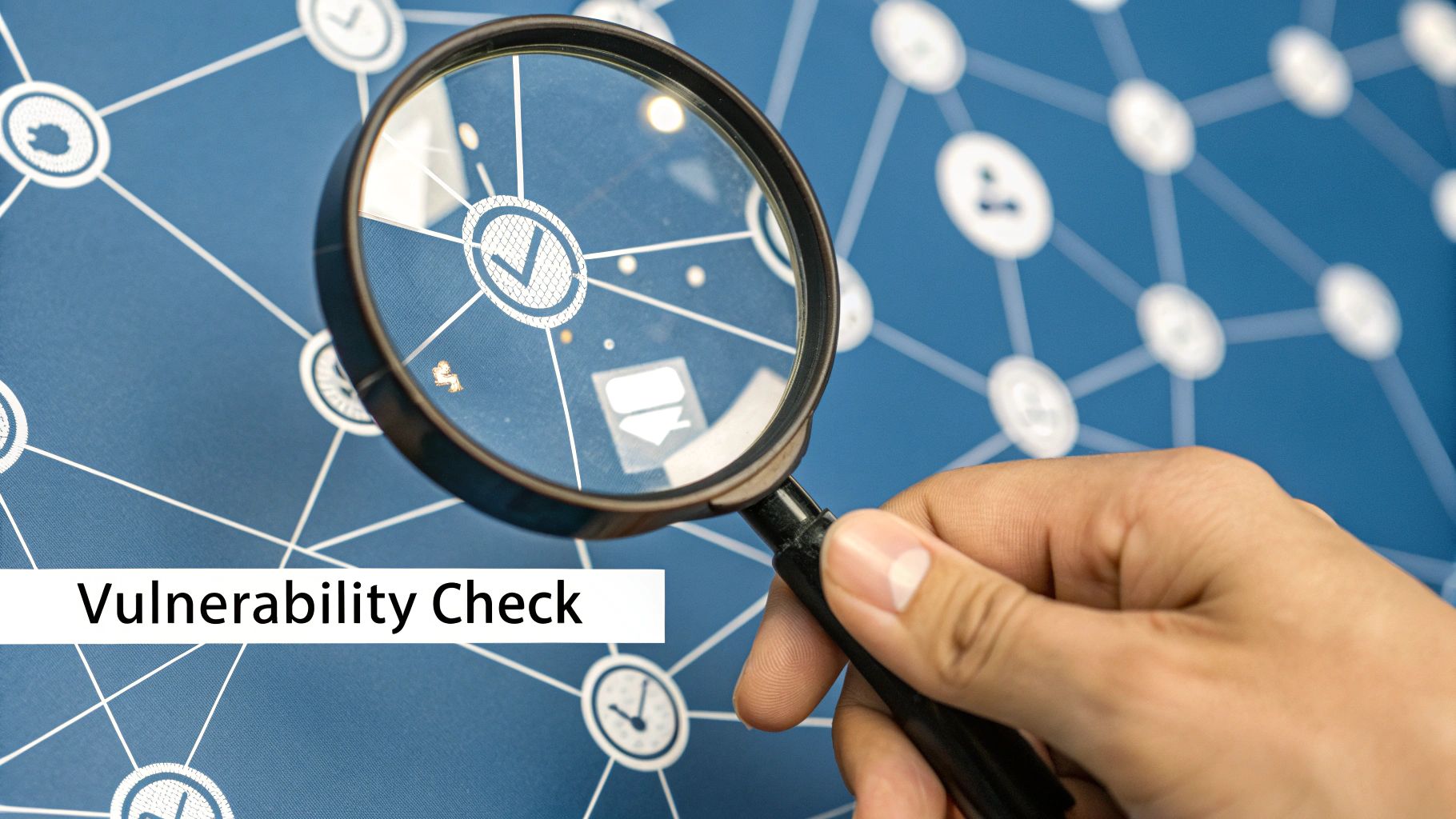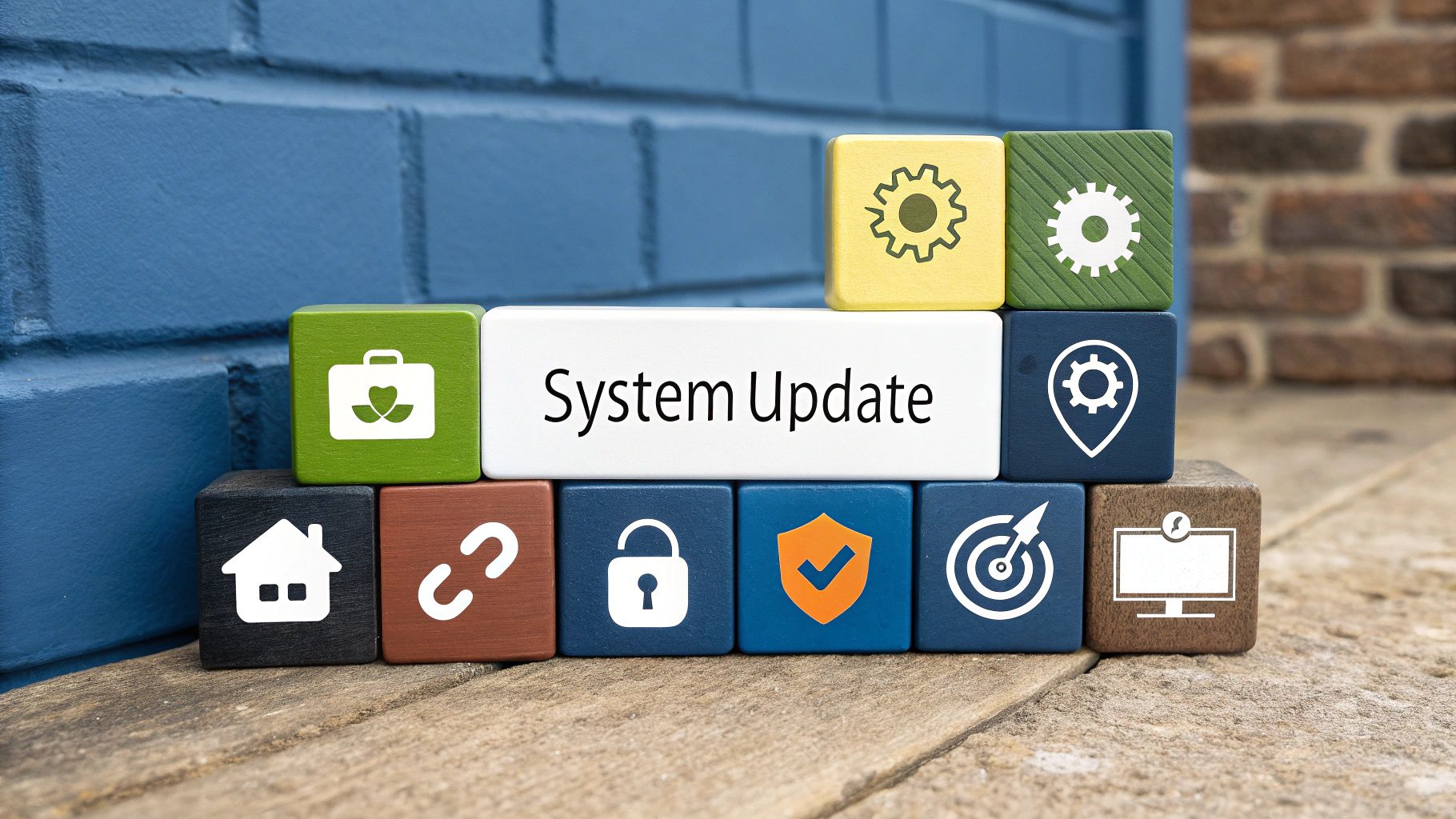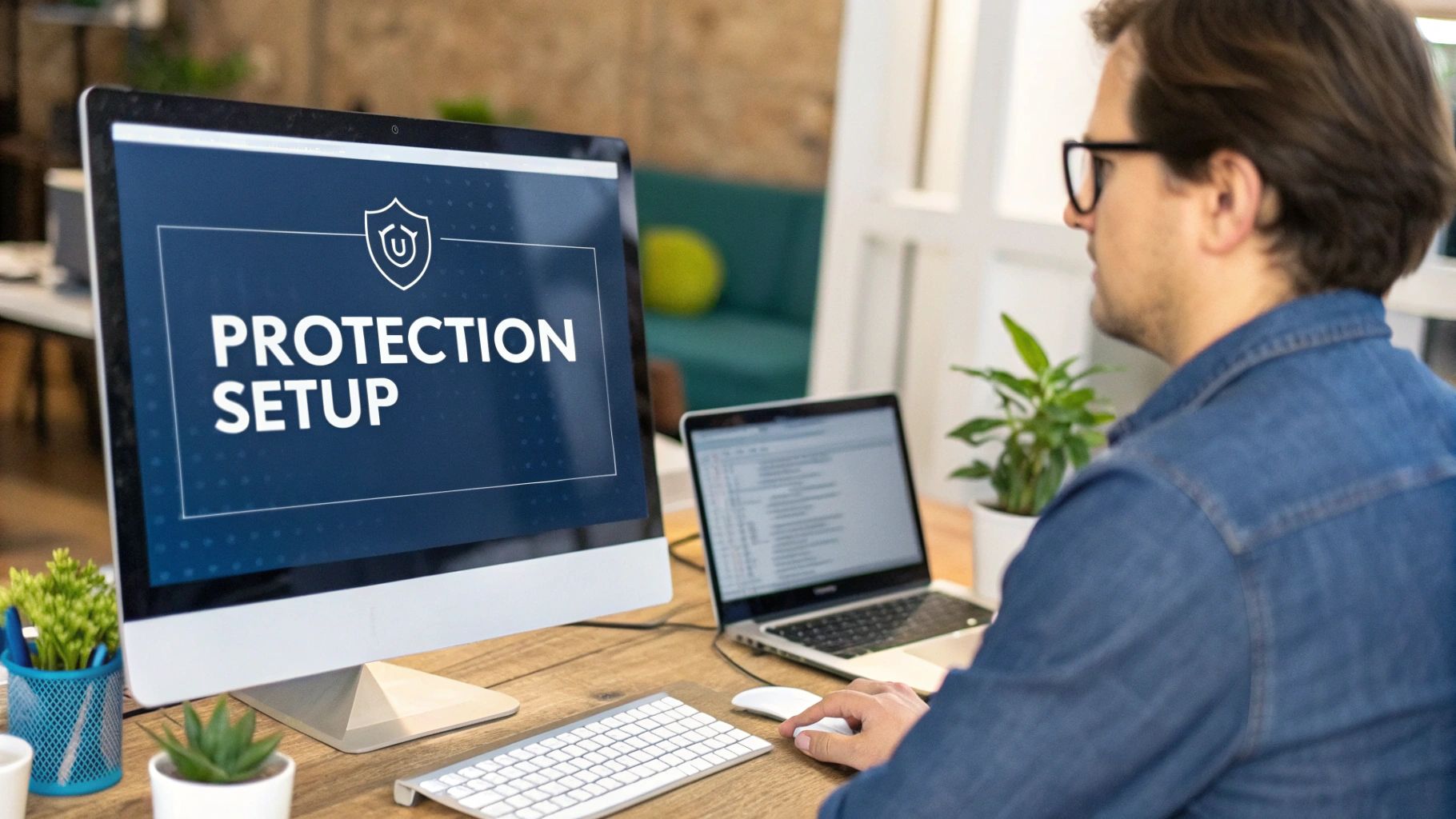How to Prevent Ransomware Attacks: A Complete Protection Guide for Organizations
Understanding Today's Ransomware Landscape

Businesses and organizations face a stark reality: ransomware attacks now pose an everyday threat. The numbers tell a sobering story – in 2023, reported ransomware cases jumped 73% from the previous year, reaching 4,611 incidents. This surge shows that standard security measures no longer provide adequate protection. Organizations must now focus on preventing attacks before they happen, rather than just reacting after the fact.
The Escalating Threat of Ransomware Groups
Criminal groups behind ransomware attacks have grown more organized and skilled at their craft. Groups like LockBit 3.0, CL0P, and PLAY drove much of the increase in attacks last year. LockBit 3.0 alone saw their attacks rise by 164% from 2022 to 2023. As these groups keep improving their methods, organizations need security plans that address both system vulnerabilities and human error to stay ahead of threats.
Beyond the Ransom: The True Cost of an Attack
While ransom payments topped $1 billion in 2023, the real price of an attack goes far beyond that initial payout. Companies face expensive system repairs, legal fees, and cybersecurity upgrades in the aftermath. The damage to their reputation and daily operations often lasts long after systems are restored. This makes prevention the smartest approach – investing in security measures upfront costs far less than dealing with a successful attack.
Understanding Attack Vectors and Vulnerabilities
Most ransomware attacks succeed by exploiting basic security gaps like outdated software and weak passwords. Phishing emails remain one of the most common ways attackers deliver ransomware, which is why employee training matters so much. Even the best technical defenses can fail if staff members aren't careful about security. The most effective prevention combines strong system protections with thorough security education for all employees.
The Importance of Proactive Security
Despite a slight dip between Q3 and Q4 of 2022, ransomware attempts remained high in 2023 at 317.59 million. These numbers show why waiting to improve security until after an attack is too risky. Organizations should actively find and fix vulnerabilities while making sure everyone follows security best practices. This preparation helps build stronger defenses against both current and future ransomware threats.
Building Your Ransomware Defense Strategy
Creating strong protection against ransomware requires a careful, well-planned approach. While reactive measures were once the norm, organizations now understand the importance of preventing attacks before they happen. Let's explore the key components needed to build an effective defense system against ransomware threats.
Multi-Layered Protection: A Modern Approach
Security experts often compare ransomware defense to protecting a medieval castle – relying on a single wall, no matter how strong, leaves you vulnerable. True security comes from multiple defensive layers working together. This includes technical tools, clear security policies, and well-trained employees who understand cyber threats. When these elements work together, they create a much stronger shield against ransomware attacks.
Technical Safeguards: Your Digital Walls
These essential technical tools form your first line of defense:
- Software Updates and Patch Management: Just as you'd repair cracks in castle walls, keeping software updated closes security gaps that attackers try to exploit. Regular updates significantly reduce your exposure to known vulnerabilities.
- Advanced Threat Protection (ATP): This acts like having guards in watchtowers, constantly scanning for danger. Modern ATP systems use smart detection methods to spot and block threats early.
- Network Segmentation: By dividing your network into smaller sections, you limit how far an attack can spread if one area is breached. Think of it as having separate rooms in your castle – if attackers breach one room, they can't instantly access everything else.
- Endpoint Protection: Every computer and device on your network needs its own guard. Good endpoint protection watches for and stops malicious software before it can cause damage.
Policies and Procedures: The Rules of Engagement
Even the best security tools need clear guidelines to be effective. Here are key policies that keep your organization secure:
- Access Control: Give people access only to what they truly need for their work. This simple rule helps contain potential damage from any breach, just like limiting which castle areas different staff can enter.
- Backup and Recovery Planning: Regular backups are your safety net. If ransomware strikes, good backups let you restore your data without paying ransom. Test your recovery process regularly to ensure it works when needed.
- Incident Response Plan: When attacks happen, everyone needs to know their role. A clear response plan helps teams act quickly to stop damage, talk to stakeholders, and get systems running again.
Human Factors: The Human Firewall
Your employees play a crucial role in preventing ransomware attacks. Here's how to strengthen this vital defense:
- Security Awareness Training: Show employees how to spot danger signs like suspicious emails and fake websites. Regular practice with simulated threats helps build real skills they can use daily.
- Building a Security Culture: Make security part of your company's DNA. Encourage people to report anything suspicious and celebrate when they help prevent attacks. For example, you might reward team members who catch test phishing emails or report real threats.
This layered approach to security works because it covers all bases – technical tools, clear procedures, and well-trained people. While it requires more upfront work than simply reacting to attacks, it proves much more effective and cost-efficient over time. By protecting your technical systems while also training your team and setting clear security rules, you build much stronger defenses against modern ransomware threats.
Creating an Unbreakable Backup Strategy
A strong backup strategy is essential for protecting your business from ransomware. When other security measures fail, reliable backups serve as your last line of defense. But basic backups aren't enough – you need a carefully designed system that can withstand determined attackers who specifically target backup data. Let's explore how to build backup defenses that work.
The 3-2-1 Rule: A Foundation for Resilience
The 3-2-1 rule provides a solid starting point for backup planning. This approach calls for keeping three copies of your data on two different types of storage media, with one copy stored safely offsite. For example, you might have your main data copy, a local backup drive, and cloud storage as your offsite copy. This protects against data loss from any single point of failure.
However, following just the basics isn't enough anymore. Modern ransomware attackers actively look for and try to corrupt backup files. Your offsite backups need true isolation and strict access controls to stay safe.
Securing Your Backups: Immutable Storage
One effective way to protect backups is through immutable storage – backup files that cannot be changed or deleted for a set time period. Think of it like putting your data in a time-locked vault that even administrators can't open until the timer runs out. This stops ransomware from encrypting or tampering with your backup copies, ensuring you'll have clean data to restore from if your main systems get hit.
Testing and Validating Your Backup Strategy: Practice Makes Perfect
Regular testing is crucial but often overlooked. You need to actually restore data from your backups to confirm they work properly. Run practice scenarios for recovering individual files, complete systems, and your full infrastructure. It's like doing fire drills – practicing the response makes you better prepared for a real emergency. Without testing, you might discover problems with your backups only when you desperately need them to work.
Beyond the Basics: Building a Truly Resilient Backup Strategy
A complete backup strategy involves more than just technical tools:
- Regular strategy reviews: Check your backup plans often to spot and fix any weak points. Threats keep changing, so your defenses need updates too.
- Staff training: Your IT team needs the right skills to manage backup systems properly. Invest in their expertise.
- Incident response planning: Document exactly how to restore from backups during an attack. Everyone should know their role.
These elements work together to create backup defenses that can reliably protect your data from ransomware attacks. With good planning and preparation, you can feel confident in your ability to recover, even from the worst incidents.
Transforming Employee Security Behavior
While strong technical defenses are essential for stopping ransomware attacks, human error remains one of the biggest risks. Your employees can either be your best defense against ransomware or your greatest weakness. That's why focusing on employee security behavior isn't optional – it's a core part of protecting your organization. Let's explore practical ways to move beyond basic awareness and create real security habits throughout your company.
Beyond Check-the-Box Training: Engaging Your Employees
Most companies rely on yearly security training that employees rush through without retaining much information. To actually change behavior, training needs to connect directly to people's daily work. Instead of generic presentations, use hands-on exercises that mirror real threats. Running mock phishing campaigns, for instance, helps employees spot suspicious emails that often deliver ransomware. Adding game elements and rewards for identifying threats keeps people interested and helps them remember key lessons.
Building a Security-First Culture
Changing employee behavior takes more than just training sessions – it requires building security into your company culture. Create an environment where people feel comfortable reporting anything suspicious without worrying about getting in trouble. Keep communication channels open and actively discuss security best practices in team meetings. When security becomes part of regular conversations and workflows, good habits develop naturally.
Measuring and Improving Security Awareness
How do you know if your security program is working? Regular assessments provide clear insights. This could include testing employees after training, tracking who falls for mock phishing attempts, or surveying people's understanding of security practices. The data helps you spot gaps and adjust future training to address specific weaknesses. For example, if employees consistently miss certain phishing red flags, you can focus extra attention on those warning signs.
Maintaining Long-Term Engagement
Security awareness isn't a one-time project – it needs ongoing attention and updates. Keep your team informed about new threats, policy changes, and examples of employees catching potential attacks. Like updating software, employee knowledge needs regular refreshes to stay current with evolving ransomware tactics. By consistently promoting security awareness, providing fresh training, and measuring results, you can help your employees become skilled defenders against ransomware. This active approach strengthens your entire organization against growing cyber threats.
Industry-Specific Protection Strategies
Different industries face their own unique security challenges when it comes to ransomware protection. A standard approach isn't enough – organizations need to understand and address the specific vulnerabilities within their sector to effectively prevent attacks. Here's how key industries can strengthen their defenses against ransomware threats.
Healthcare: Protecting Patient Data
Hospitals and healthcare providers make appealing targets for cybercriminals due to their sensitive patient records. When ransomware encrypts medical data, it doesn't just disrupt business operations – it puts patient care and safety at risk since doctors can't access critical health records. To prevent attacks, healthcare organizations need multiple security layers. This includes strict access controls on systems, frequent data backups, and strong protection on all connected medical devices. Just as important is ongoing staff education, since healthcare workers must stay current on the latest phishing scams and security best practices.
Manufacturing: Securing Operational Technology
Modern manufacturing relies heavily on connected operational technology (OT) systems that control production processes. While this connectivity improves efficiency, it also creates openings for ransomware attacks that could shut down entire assembly lines and stop product shipments. The costs add up quickly – both in terms of lost revenue and damaged customer relationships. That's why manufacturers must separate their OT and IT networks through proper segmentation. They also need endpoint protection on OT devices and regular security patches to fix vulnerabilities. Having tested incident response plans is crucial for getting production back online quickly if an attack occurs.
Financial Services: Defending Against Sophisticated Threats
Banks and financial firms face some of the most advanced ransomware attacks because of their valuable data. Criminals often use double extortion tactics – not just encrypting files but threatening to leak sensitive information publicly. The financial sector saw more attacks in 2023, showing how criminals continue targeting this industry. To stay protected, financial companies need strong threat monitoring to spot and stop emerging attacks early. They must also use advanced security tools along with multi-factor authentication and strict access limits to guard financial data. Regular security testing helps catch potential weaknesses before criminals can exploit them.
Building a Tailored Protection Strategy
No matter your industry, stopping ransomware requires planning ahead based on your specific needs. Start by assessing your current security and identifying weak points that attackers might target. Consider how a ransomware attack could impact your operations. Then create a protection plan that fits your situation, including technical safeguards like layered security, current software patches, and reliable backups. Make sure to train employees on security awareness too. Review and update your strategy regularly as ransomware tactics change. By understanding your industry's unique challenges and taking the right preventive steps, you can build strong defenses to protect your organization from these costly attacks.
Building Your Incident Response Playbook
No matter how strong your security is, ransomware attacks can still happen. Having a clear incident response playbook is essential for managing these situations effectively. A well-planned response can help you recover quickly and minimize damage when dealing with ransomware attacks. Let's walk through the key steps to create a practical incident response plan.
Containing the Threat: First Response Actions
The first minutes after detecting ransomware are crucial. Quick, decisive action can stop the attack from spreading further. Start by isolating affected systems – just like creating a firebreak to stop a forest fire. This means disconnecting infected computers from your network, turning off Wi-Fi and Bluetooth, and possibly shutting down certain servers. Make sure your response team knows exactly what to do by establishing clear communication channels and roles beforehand.
Assessing the Damage: Understanding the Scope of the Attack
After containing the initial threat, take time to fully assess what's been affected. Figure out which systems were hit, what type of ransomware you're dealing with, and how much data was encrypted. This information helps guide your next steps. For example, knowing the specific ransomware variant might help you find existing decryption tools. Understanding which data was affected also helps you plan recovery steps and update stakeholders accurately.
Eradication and Recovery: Restoring Your Systems
Once you know what you're dealing with, you can start removing the ransomware and getting systems back online. Use trusted security tools to clean infected devices. But removing the ransomware is just the first step – you'll need to restore the encrypted data too. This is where good backups become essential. Restoring from clean backups is often the best way to recover without paying ransom. Make sure to test your backups regularly so you know they'll work when needed.
Communication and Legal Considerations: Navigating the Aftermath
Clear communication matters throughout the recovery process. Keep everyone informed – your employees, customers, and business partners all need updates about what's happening. Be honest about the situation, even if you're still gathering details. Don't forget about legal requirements too. Depending on your business and the type of data involved, you may need to report the incident to authorities. Working with law enforcement can also help track down attackers and possibly recover data.
Continuous Improvement: Learning From the Incident
After resolving the immediate crisis, use the experience to improve your security. Review what happened and identify ways to strengthen your defenses and response plan. This might mean adding new security tools, improving how teams communicate during incidents, or updating staff training. Each incident provides lessons that help protect against future attacks.
Looking to improve your incident response abilities? Check out DebugBar for practical tools and guidance on enhancing your security and development processes. Their resources cover everything from IT performance optimization to practical AI integration. Start strengthening your defenses before the next incident happens.


